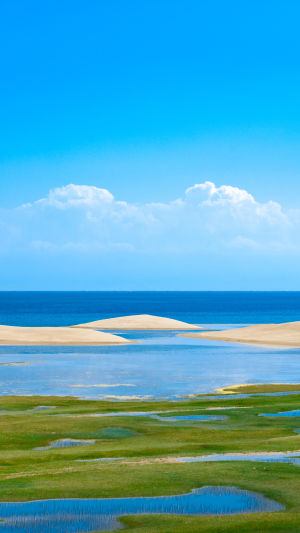Wetlands are an essential natural resource and unique ecosystem that provides fertile ground for the nurturing, transmission, and development of human civilization.
They are a precious natural heritage left to mankind by the Earth, along with forests and oceans.
The Convention on Wetlands of International Importance, known as the Convention on Wetlands of International Importance especially as Waterfowl Habitat, is one of the earliest intergovernmental multilateral environmental conventions dedicated to the conservation and rational use of global wetland ecosystems, promoting sustainable human development.
From November 5 to 13, the 14th Conference of the Parties to the Convention on Wetlands was held simultaneously in Wuhan, Hubei, China, and Geneva, Switzerland.
The Conference theme, "Cherishing Wetlands, Harmonious Co-existence between People and Nature," was dedicated to gathering consensus, promoting global cooperation on wetland conservation, and writing a new chapter of sustainable human development.
Representatives of Parties and international organizations gathered at the Conference venue in Geneva, Switzerland, and looked forward to the upcoming 2023 Global Coastal Forum meeting to be held in Yancheng, China.
Bruno Oberle, Director General of IUCN, particularly mentioned the phrase "a hundred rivers return to the sea," which he appreciates because it not only has a literal meaning that all rivers will flow to the sea but also has a deeper meaning - we are all working towards the common goal of protecting nature, a perfect fit for the theme of the Global Coastal Forum meeting.
Yancheng, located on the coast of Jiangsu province in China, has the longest coastline, the most coastal mudflats, and the most extensive sea area in the province. It also boasts the best-protected coastal-type wetlands on the west coast of the Pacific Ocean, extending to the sea at a rate of more than 10,000 mu per year.
Yancheng is home to the only seaside wetland world natural heritage site in China, two national nature reserves of Dancing cranes and elk, and is awarded as an international wetland city.
Yancheng is a city that grew up on wetlands, located in the northern wing of the Yangtze River Delta city cluster, on the shore of the Yellow Sea in the middle of China's eastern coastal region, in the transition zone from north subtropical to warm temperate climate.
The city's topography is flat, with most areas less than 5 meters above sea level. The eastern coastal wetlands are vast, the central river network wetlands are spread, and the western lakes and wetlands are wide.
It has the largest area of silty intertidal wetlands on the west coast of the Pacific Ocean, is one of the cities with the most complete wetland types, the largest contiguous distribution area, and the most comprehensive protection level in the developed eastern coastal region of China. It is known as the "Wetland Capital of the East."
Jiangsu Yancheng Wetland Rare Bird National Nature Reserve, located in the central coast of Jiangsu, mainly protects rare wildlife such as the Dan Ding Crane and the mudflat wetland ecosystem on which it depends, and nurtures exceptionally rich biodiversity resources.
As one of the largest and most important habitats for migratory birds in the Yellow and Bohai Seas, it has become the first coastal wetland type World Natural Heritage site in China and the second in the world.
The wetlands in Yancheng play a crucial role in the conservation of biodiversity and maintaining ecological balance. They also provide ecosystem services such as carbon storage, flood control, water purification, and climate regulation, making them significant contributors to the sustainable development of the region.





